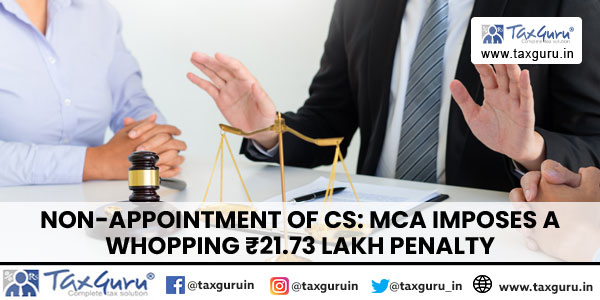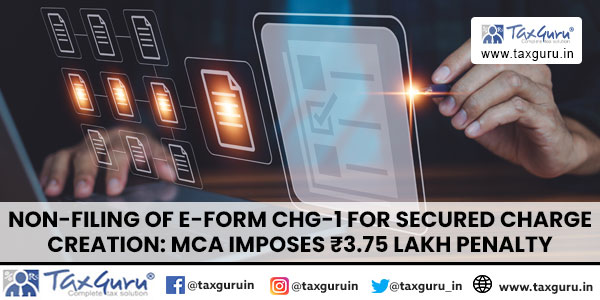Case Law Details
Medical evidence is only an opinion, therefore, not conclusive. It can be acted upon only when necessary corroboration is available.
1. The appellant has challenged the conviction under Section 302 of the Indian Penal Code (‘the IPC’ in short) and sentence of life imprisonment and fine of Rs.1,000/- for committing murder of his wife Sadan Bai (since deceased) during intervening night of 7th/8th July, 2003.
2. The appellant was married with the deceased about 15 years back from the date of incident. They had 5 children out of the wedlock. There is no allegation of strained relationship nor there is any history of quarrel or marpeet between them.
3. As per the prosecution case, the appellant along with the deceased and 5 children had their dinner and retired for bed at about 8.00 pm. One of their son informed the appellant at about 3.00 am that his mother has consumed poison and was agonised. The appellant went to the other room where the deceased was sleeping to find that she has consumed poison but was semiconscious. The appellant informed Ganesh Singh (PW-1), brother of the deceased, who came over the appellant’s house and enquired from the deceased, on which she stated that she has consumed poison. When the deceased was taken to the hospital, she collapsed on the way, therefore, her body was brought back.
4. When the merg intimation was lodged and the dead body was sent for postmortem, Dr. Heeralal Singh (PW-10) conducted autopsy and submitted his report vide Ex. P-6 finding that the death has occurred due to throttling; nature of death is homicidal; mode of death being cardio respiratory failure; and time passed since death 24-30 hours. In view of the postmortem report, charge sheet was filed against the appellant for committing the offence under Section 302 of the IPC.
5. Shri Rajput, learned counsel appearing for the appellant, would submit that except for the finding in the postmortem report, there is no other material against the appellant, therefore, his conviction is without any cogent and reliable evidence. Shri Rajput would further submit that the appellant cannot be convicted merely on the basis of suspicion.
6. Per contra, Shri Dubey, learned Panel Lawyer appearing for the State, would submit that in view of the postmortem report, wherein the deceased died due to throttling, the appellant should explain the cause of death in view of the provisions contained in Section 106 of the Evidence Act because the appellant and the deceased were alone in the house and it was within the special knowledge of the appellant as to how the deceased died.
7. We have heard learned counsel for the parties and perused the record.
8. In the postmortem report (Ex.P-6), the Autopsy Surgeon has found swelling in both sides of the neck, blood & congestion in trachea & thoracic cavity together with small amount of blood in both chambers of heart. Blood clot was also present in both sides of neck due to pressure of neck.
9. As per Modi’s Medical Jurisprudence throttling is form of manual strangulation by compressing the neck with hands. In case of throttling or strangulation, a pale face would indicate a rapid death from reflex cardiac arrest, while a cyanosed face with petechiae would suggest a delayed death. In the case in hand, the doctor has not mentioned anything about the condition of face. Modi further says that if the fingers are used for throttling, marks of pressure by the thumb and the finger prints are usually found on either side of the windpipe, however, in the case in hand, the Autopsy Surgeon has not recorded any finding about the availability or existence of fingerprints on either side of the windpipe nor any thumb impression has been observed. Ordinarily, bruises are also found when thumb and fingers are used for commission of throttling. Besides fingerprints or thumb impression on the neck, there may be abrasion and bruises on mouth, nose, cheeks, forehead, lower jaw or any other part of the body, if there has been a struggle, however, none of these features have been observed in the postmortem report.
10. As per Modi, during internal examination, the lungs are usually markedly congested, showing haemorrhagic patches and petechiac and exuding dark fluid blood on section. They may show emphysematous bullae on their surface due to over distension and rupture of the interalveolar septa. The bronchial tubes usually contain frothy, bloodstained mucus. The right side of the heart is full of dark fluid blood, and the left empty. The right ventricle is found contracted and empty like the left, if the heart had continued to beat after the stoppage of respiration. Sometimes, both the cavities are found full, if the heart stopped during diastole. The abdominal organs are darkly congested. The brain is also congested and shows petechial haemorrhages.
11. As against the above features referred by Modi, the present postmortem report does not feature haemorrhagic patches over the lungs. The bronchial tubes also does not contain frothy, bloodstained mucus, which should have been found. The right side of the heart should be full of dark fluid blood and the left empty, whereas in the present case, small amount of blood is found in both chambers of heart. There is no observation about the right ventricle, which according to Modi should have been contracted and empty like the left.
12. Modi further says in case of strangulation, the brain is also congested and shows petechial haemorrhages, whereas in the present postmortem report the skull, membrance, brain and spinal cord have been found healthy. Thus, the internal appearance, which should have been available in case of strangulation by throttling, is entirely absent or they defer in material terms than what is observed by Modi, therefore, the finding in the postmortem report that the death is due to throttling cannot be treated as conclusive unless there is corroboration in material terms.
13. The nature and binding value of a medical witness has been highlighted by the Supreme Court in Madan Gopal Kakkad v. Naval Dubey and Another , wherein the following has been held in paras 34, 35 & 36 :
34. A medical witness called in as an expert to assist the Court is not a witness of fact and the evidence given by the medical officer is really of an advisory character given on the basis of the symptoms found on examination. The expert witness is expected to put before the Court all materials inclusive of the data which induced him to come to the conclusion and enlighten the Court on the technical aspect of the case by explaining the terms of science so that the Court although, not an expert may form its own judgement on those materials after giving due regard to the expert’s opinion because once the expert’s opinion is accepted, it is not the opinion of the medical officer but of the Court.
35. Nariman, J. in Queen v. Ahmed Ally while expressing his view on medical evidence has observed as follows:
“The evidence of a medical man or other skilled witnesses, however, eminent, as to what he thinks may or may not have taken place under particular combination of circumstances, however, confidently, he may speak, is ordinarily a matter of mere opinion.”
36. Fazal Ali, J. in Pratap Misra v. State of Orissa has stated thus: “…
[I]t is well settled that the medical jurisprudence is not an exact science and it is indeed difficult for any Doctor to say with precision and exactitude as to when a particular injury was caused … as to the exact time when the appellants may have had sexual intercourse with the prosecutrix.”
14. In view of the above, since the medical evidence is not by itself conclusive unless duly corroborated by other evidence, we have closely scrutinised the oral evidence rendered by the witnesses so as to ascertain existence of motive and other circumstances, which may compel us to believe and act upon the postmortem report. Almost all the witnesses examined by the prosecution namely; Ganesh Singh (PW-1), brother of the deceased, Ramdayal (PW-2), Mukesh Singh (PW-3), Kailasho Bai (PW-7) and Ram Sai (PW-8), aged about 13 years, son of the deceased, have stated that the deceased died after consuming poison.
15. As a matter of fact, Ganesh Singh (PW-1) and Ramdayal (PW-2) are the witnesses of oral dying declaration to whom the deceased had stated that she has consumed poison. Surprisingly, the Medical Officer, who conducted the postmortem on the body of the deceased, did not think it proper to preserve viscera to ascertain existence of poison even though the requisition for postmortem had clearly stated that the deceased has died due to suspected poisoning.
16. For the foregoing, we are of the considered view that there is a serious doubt as to whether the deceased has died of throttling. Since the oral testimony of the witnesses would project that the deceased died on account of poisoning, but there is no forensic evidence to substantiate the same because viscera was not preserved by the Autopsy Surgeon, it is a case of insufficient evidence against the appellant.
17. The learned trial Court has committed serious error by convicting the appellant for offence punishable under Section 302 of the IPC. Thus, we are unable to sustain the impugned judgement of conviction and order of sentence.
18. As a sequel, the appeal is allowed. Conviction and sentence imposed on the appellant under Section 302 of the IPC are hereby set aside and he is acquitted of the said charge. The appellant is on bail. Surety and personal bonds earlier furnished at the time of suspension of sentence shall remain operative for a further period of six months in view of the provisions of Section 437-A of the Cr.P.C. The appellant shall appear before the higher Court as and when directed.


























